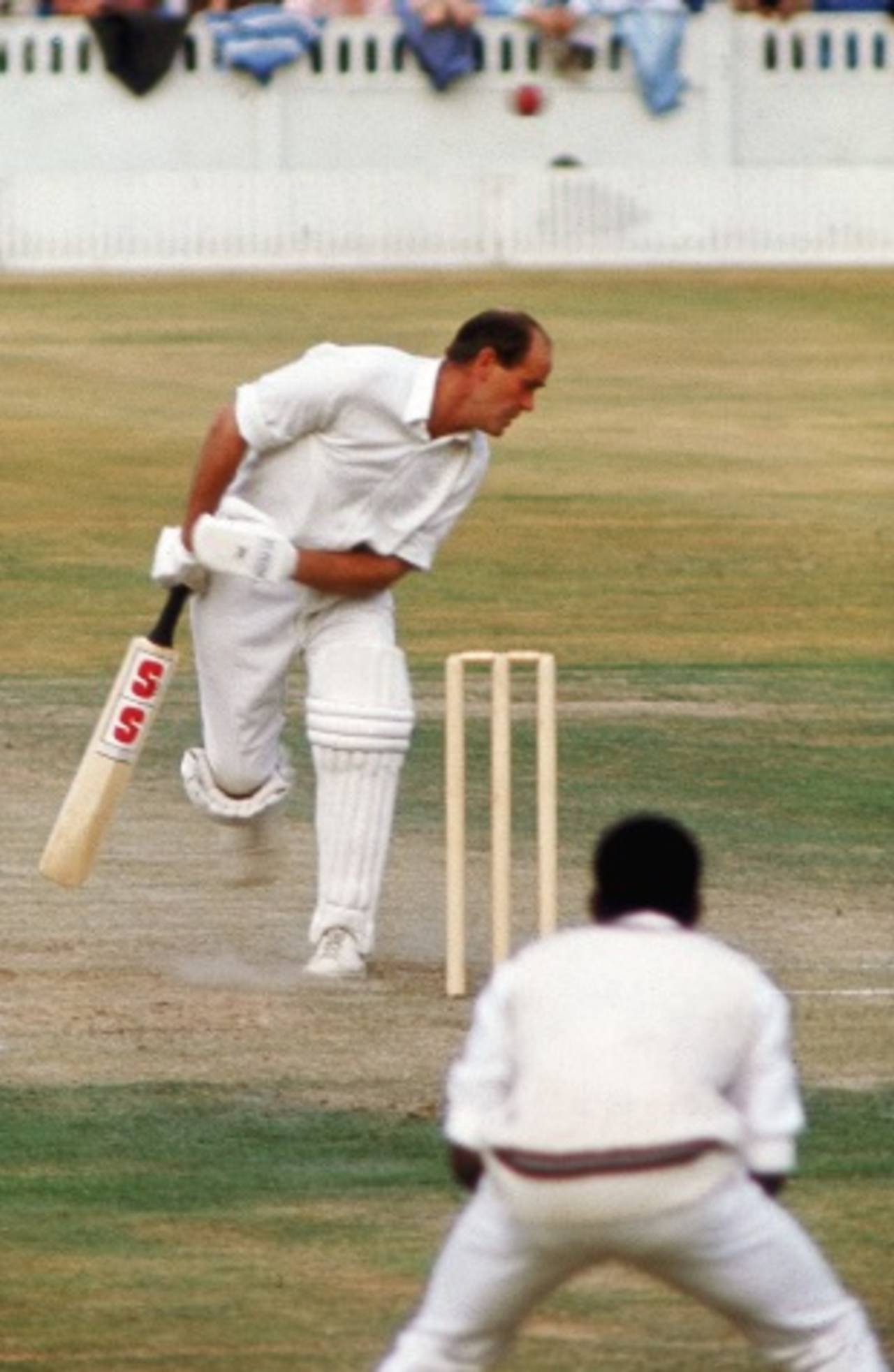Men oddly out
Earlier in the week Kumar Sangakkara was out hit wicket when he lost hold of his bat and saw it crash into the stumps. We look at 11 other strange ways of losing your wicket

Unbreakable: Brian Close made an art of taking body blows, while batting and in the field • Getty Images
What came to be known as the Joe Solomon Cap Incident happened in the second Test of the historic 1960-61 series between Australia and West Indies. Solomon went on the back foot to play a topspinner from Richie Benaud when his cap fell onto the stumps, dislodging a bail. The umpire gave him out hit wicket after the fielders appealed. It was the right decision according to the laws, but the crowd didn't like what they perceived as an unsportsmanlike-like appeal from the Australian captain, Benaud, and proceeded to boo him for the rest of the afternoon.
John Inverarity was bowled for a duck by Greg Chappell during a game between Western Australia and South Australia in Adelaide in 1969-70. What's the fuss, you ask? The ball was deflected in the air after it hit a swallow. A bemused Inverarity walked away, but he was recalled by the umpire, Colin Egar, and went on to score 89. The bird had no such luck: it died immediately after the impact.
In a game between Gloucestershire and Yorkshire, Martin Young was caught at slip by Phil Sharpe after it ricocheted off Brian Close's forehead. Close was at short-leg, and as he was hit, he shouted, "Catch it!" When his team-mates enquired what would have happened had it hit him a little lower, Close said, "H'd have been caught in t'gully." A fearless fielder close in, Close's autobiography was fittingly called I Don't Bruise Easily.
In a Test against Australia in 1959-60, India's Nari Contractor pulled an Alan Davidson delivery and the ball lodged between the thighs of Neil Harvey, standing at short-leg, as he jumped back to take evasive action.
In 1973, in a game between Middlesex and Surrey at The Oval, Mike Brearley defended a delivery from Intikhab Alam, but the ball began to roll back towards the stumps. Brearley, shaping to use the bat to push the ball away, ended up knocking down the wicket.
In Christchurch in 2006, Kumar Sangakkara hit a delivery down to Chris Martin at third man to complete the single that brought up his hundred. As Sangakkara acknowledged the applause for the landmark, Muttiah Muralitharan, his partner, left his crease to congratulate him, even as the throw came in to Brendon McCullum, who broke the stumps. The umpire, Brian Jerling, gave Muralitharan out as the ball was not dead when he took his little walk. It caused quite a controversy, and the players had plenty to say: Mahela Jayawardene invoked the spirit of cricket, while an unrepentant McCullum called it " an opportunity to take a wicket" and said he'd do the same again, given a chance.
In a Test against Bangladesh in Mirpur in 2008, South Africa's AB de Villiers thought he had been thrown a gift when Mohammad Ashraful bowled a long hop that bounced twice before it reached him. De Villiers went for a big swing but top-edged it back to an equally surprised Ashraful, and was ruled out. Law 24, section 6 states that the umpire shall call a no-ball only if the ball bounces more than twice before reaching the popping crease. Graeme Smith wasn't too pleased at the decision but de Villiers, who hung around for a while before walking, later said he wasn't too surprised. "I was aware of the rule but I was hoping for someone to call it a no-ball or whatever."
In the 1986 Leeds Test, Maninder Singh was out caught Graham Gooch in unusual fashion. Maninder edged Graham Dilley to second slip where Gooch spilled it towards the left of the keeper Bruce French, who swooped for it but could only scoop it up in the air. Whereupon Gooch acted quickly to kick the ball up with his right boot and calmly pouch the catch.

In 1990-91, in Georgetown, Dean Jones was bowled off a no-ball from Courtney Walsh and walked off, not having heard the call. Jones was about to return to the crease, having realised what had just happened, when a fielder threw down the stumps and he was given out by umpire Clyde Cumberbatch. Jones shouldn't have been given out as the Laws in effect at the time stated that the striker cannot be run out off a no-ball unless attempting a run.
Kris Srikkanth got out in his debut Test, against England in Bombay in 1981, in a hilarious way. After having being out for a duck in his first innings, he had moved to 13 in the second when he jabbed a ball to John Emburey at gully and set off on his customary between-deliveries walk away from the crease. Emburey threw down the stumps and the umpire, Swarup Kishen, ruled Srikkanth out. India's captain, Sunil Gavaskar, already reportedly unhappy that Srikkanth had replaced Chetan Chauhan in the side, dropped his bat in disgust at the non-striker's end.
In a Test match in 1995 in Napier, Sri Lankan opener Dulip Samaraweera had just completed a run and was in his crease when Ken Rutherford's throw came towards him. Samaraweera jumped to avoid being hit and while he was airborne, the ball hit the stumps, whereupon he was (wrongly) given out.
Sriram Veera is a staff writer.at Cricinfo